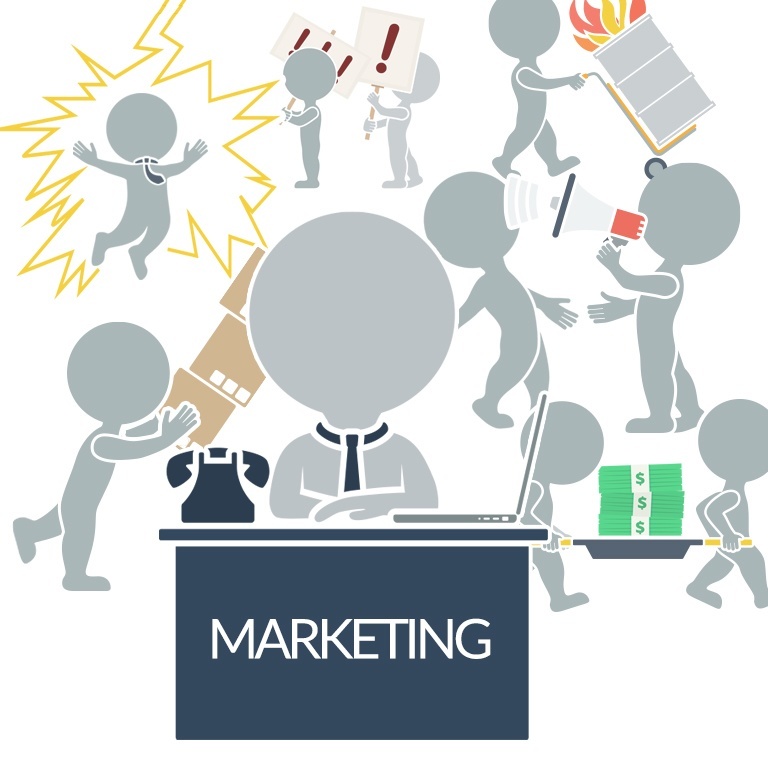There’s an interesting post from Jill Robinson at the TRGArts blog (Robinson is President & CEO of that consulting firm) where she examines the value of traditional subscriptions within the current arts marketing environment. The post presents some case study data to support the continued viability of that revenue stream but it never ceases to amaze me how the field gets tied into knots over this topic.
 Since the downturn, we’ve seen two strong camps emerge in this discussion; “subscriptions are dead” or “double down.” For frame of reference, when we use the term subscriptions here, we’re describing the model where a ticket buyer purchases a package of event tickets to multiple performances spread over the course of a season in a single transaction.
Since the downturn, we’ve seen two strong camps emerge in this discussion; “subscriptions are dead” or “double down.” For frame of reference, when we use the term subscriptions here, we’re describing the model where a ticket buyer purchases a package of event tickets to multiple performances spread over the course of a season in a single transaction.
A Quick Primer
For those who are new to this topic, subscriptions have been a mainstay of earned income for decades thanks to generating a large intake of cash in a comparatively short period of time combined with a much higher rate of marketing performance, which is marketing jargon for how much money for each ticket sale is left over after deducting marketing expenses.
Subscriptions also provide a higher level of guaranteed income thanks to no-refund and donate-return policies for any unused tickets. So there’s plenty to love in this model but the problem is that ticket buyer habits have changed, especially among Millennial buyers; many no longer wish to commit to multiple fixed dates and don’t respond as well to the traditional sales approach. As a result, subscription sales have dropped off thereby producing a negative twofer for arts groups in the form of lower revenue combined with higher marketing costs to sell single tickets.
As such, it isn’t difficult to see why this issue is hashed out on such “good vs. bad” terms.
The Real Problem
Robinson’s article approaches the topic from many of the traditional perspectives that define these conversations; likewise, she highlights what is perhaps the most crucial element: talking about the underlying value of loyalty associated to traditional subscription ticket buyers.
Robinson examines issues related to why ticket buyers do and don’t subscribe but that’s where things stray off path.
Perhaps unsurprisingly, each arts org needs to begin evolving into a new cash flow model which spreads revenue out over the course of the full season while simultaneously capitalizing on lower marketing costs to convert those single ticket buyers into a statistically reliable patron group, all of which is just more marketing jargon for developing loyal patrons.
But even if an arts org is committed to refining these methods, there’s a giant roadblock preventing them from developing similar levels of reliable single ticket buyer loyalty similar to what is experienced via traditional subscribers: Box Office/Ticketing and Customer Relationship Management (CRM) vendors.
A Problem That Is Waiting To Be Solved
Currently, ticketing providers have focused on developing the capacity to sell traditional subscriptions (which includes flex subscriptions) alongside single tickets. Unfortunately, there is little development geared toward making it possible for arts groups to easily design and implement the sort of loyalty and reward programs consumers are growing increasingly accustomed to expecting from businesses that provide online transactional relationships (more jargon that just means selling and buying stuff online).
The key here is a level of automation that allows arts orgs to track buying habits, analyze patron data, and provide benefits to ticket buyers that cross various thresholds. There’s nothing new about this technology, it’s been around for some time and was pioneered by large online retailers like Amazon.com and airline reward programs.
The process has inherent benefits in the form of custom tailored patron communication to court patrons without simultaneously overwhelming them but in a very different fashion than traditional subscriptions or single ticket efforts.
Robinson is spot on when she purports the value of loyalty among ticket buyers and on that point, she concludes her post with some excellent sentiments.
Each loyalty step should be rewarded, organizationally. What we should be rewarding is MORE. The more a patron invests, the more access and benefits they should get.
But the discussion here needs to evolve past the value of traditional ticket buying approaches to accomplish those goals and acknowledge the lack of capacity to do anything else.
Until that changes, everything else is a choreographed effort to rearrange the deck chairs on the Titanic.
Moving Forward
In order to facilitate change, arts orgs are going to have to take a very strong position on the need for incorporating loyalty/reward capacity into the online ticket buying process. They will need to make their respective providers aware of this need and drive them toward those directions.
Having said that, and functioning as an arts org focused Web provider, I can say that the process will be neither simple nor comparatively inexpensive. This level of sophistication takes time to development and has to keep all of the current forms of ticket buying options included in the mix so groups can transition as needed based on patron buying habits. That means increased legacy and support costs, all of which ultimately get passed along to users.
Fortunately, none of that rises to the level of becoming a showstopper, but it is worth acknowledging.
Next, the topic of technical limitations needs to become injected into existing traditional subscription conversations.
In the end, process matters and it is all too easy to get wrapped up in the warm blanket of elements that are familiar and comfy; in spite of this, we need to move beyond the conceptual level and realize that the practical aspects related to implementation are artificially limiting not only the discussion, but preventing needed answers.



Wonderfully written article, Drew! (Regarding a topic that we desperately need more diverse and sophisticated thinking to solve… thank you for getting that ball rolling.) I would LOVE to see a Part 2 with more detail about the specific ways arts orgs are doing things RIGHT with their CRM systems and online sales funnels. We are in the process of upgrading our “technical limitations” and I am eager to learn more about the best ways that other arts orgs have implemented the new technology. (In our case the new tech is the Patron Manager CRM.)
Thanks again!
I would certainly love to write the sort of Part 2 you’ve described Kenny but as of now, there aren’t any providers that offer this sort of functionality. As of now, they are all geared toward those traditional methods and I don’t think anyone could blame them, they are selling what customers know. If any of them want to really break ahead of the pack, they’ll begin to move in these directions.
Having said that, I do think there are some small steps in the right direction although they aren’t always coming from the primary CRM/Ticketing providers. I’m thinking about groups that go to efforts with the goal of creating single page donation forms that don’t require users to slog through the typical account creation process and multiple page clickthroughs to make a simple donation. I wrote about this in an article from Nov, 2014 and you might find some useful reference content there.
Drew, I enjoyed your analysis but you don’t mention the obvious. Annual fund donors (renewable, reliable supporters) overwhelmingly come from the subscriber base. Singe ticket buyers do not donate at nearly the same rate of participation, reflecting the loyalty of the subscriber to the product and cause.
Hi Jeremy, thanks for your insight and yes, subscribers do tend to donate at higher rates than single ticket buyers but that result is also a byproduct of the artificial restrictions put in place mentioned in the post. Moreover, there’s nothing preventing groups from continuing traditional subscription packages while at the same time expanding into additional loyalty/reward offerings.
There is already evidence that the demographics most likely to be attracted by those options are also among those who are demonstrating higher levels of individual giving at younger ages than traditional donors (see a post of mine at ArtsHacker.com about this). Consequently, today’s results aren’t indicative of future potential unless those artificial restrictions continue and once those are removed, you’ll begin to see those trends evolve.
Drew, thanks for this reply and thoughtful take on where the field needs to go in terms of developing loyalty. As I said in my post, we care much less about being right than following the data; the data says that loyalty rules, because, as you put it, we need to “spread revenue out over the course of the full season while simultaneously capitalizing on lower marketing costs to convert those single ticket buyers into a statistically reliable patron group.” I’m glad you brought up the idea of developing comparable levels of reliable single ticket buyer loyalty and rewarding patrons for more even if it’s outside of traditional systems. In our firm, we walk alongside clients as they test any number of new loyalty incentive ideas and we love the experimentation that helps us all learn. You’re right–the technology hasn’t kept up with this particular need in the field. Audience development at every level of loyalty is critical to capitalizing and increasing organizational capacity; as technology disrupts and we adapt our tactics, there’s limitless possibility for how we can strategically bring our most passionate fans closer and reward them for their support.
Hi Jill, thanks for weighing in, I’m glad to read about your insight. The next, perhaps tricky, step is how do those of us who don’t provide the technical component yet work very closely with them encourage that sector to begin moving in those directions before arts orgs no longer have enough resources to absorb all of the costs.